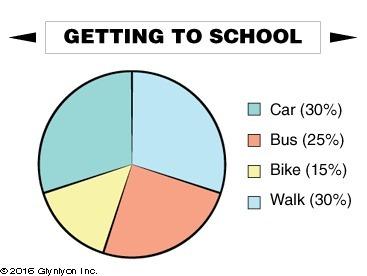
Mathematics, 12.01.2021 22:20, mathwiznot45
For the Birds—Wildlife Management
How does the presence of humans affect the population of sparrows in a park?
Do more humans mean fewer sparrows? Or does the presence of humans increase the number of sparrows up to a point?
Are there a minimum number of sparrows that can be found in a park, regardless of how many humans are there? What can a mathematical model tell you?
In 1997, researchers set out to answer these questions. They observed the sparrow population and the numbers of pedestrians in wooded parks. Their approximate data can be seen below.
Number of pedestrians
per hectare 2 4 5 5 6 7 7 8 9 10 11
Number of sparrows
per hectare 15 80 75 124 30 79 161 180 75 140 179
Number of pedestrians
per hectare 11 12 13 14 16 17 20 22 26 28 33 38
Number of sparrows
per hectare 250 169 165 162 94 140 86 90 53 22 24 60
1.Make a scatter plot of the data. (Use desmos graphing calculator to create your plot )
Explain your domain and range.
2. Does the data represent a function? Why or why not? What might explain the duplicate entries?
3. What trends do you see in the data?
4. Using the regression feature of your calculator, find three models for this data along with the corresponding coefficients of determination.
a. a linear model
b. a quadratic model
C. a cubic model
5. According to the coefficient of determination, which model fits the data best? Why?
6. Graph the three regression equations with your scatter plot.
7. Focusing on the linear model:
a. What is the y-intercept, and what does it represent?
b. What is the x-intercept, and what does it represent?
c. Interpret the slope of the model with respect to the data.
d. What is realistic about this model? What is unrealistic?
8. Focusing on the quadratic model:
a. What is the y-intercept, and what does it represent?
b. What is the x-intercept, and what does it represent?
c. What is the maximum point of the model? What does it represent?
d. What is realistic about this model? What is unrealistic?
9. Focusing on the cubic model:
a. What is the y-intercept, and what does it represent?
b. What is the x-intercept, and what does it represent?
c. What is the relative maximum point of the model? What is the relative minimum of the model? What do they represent?
d. What is realistic about this model? What is unrealistic?
10. Why do you think the researchers for this study chose a quadratic model for their data even though the coefficient of determination for this model was not the highest? Which model would you have chosen? Explain your reasoning.

Answers: 3
Other questions on the subject: Mathematics


Mathematics, 21.06.2019 17:00, landenDfisher
For the rule of 78, for a 12-month period, the last term in the sequence is 12 and the series sums to 78. for an 10 month period, the last term is and the series sum is . for a 15 month period, the last term is and the series sum is . for a 20 month period, the last term is and the series sum is
Answers: 2

Mathematics, 21.06.2019 17:10, ivilkas23
The frequency table shows a set of data collected by a doctor for adult patients who were diagnosed with a strain of influenza. patients with influenza age range number of sick patients 25 to 29 30 to 34 35 to 39 40 to 45 which dot plot could represent the same data as the frequency table? patients with flu
Answers: 2

Mathematics, 22.06.2019 00:30, challenggirl
20 ! brainliest ! add and simplify your answer.
Answers: 1
Do you know the correct answer?
For the Birds—Wildlife Management
How does the presence of humans affect the population of sparrows...
Questions in other subjects:


Mathematics, 04.02.2020 23:55


Business, 04.02.2020 23:55












